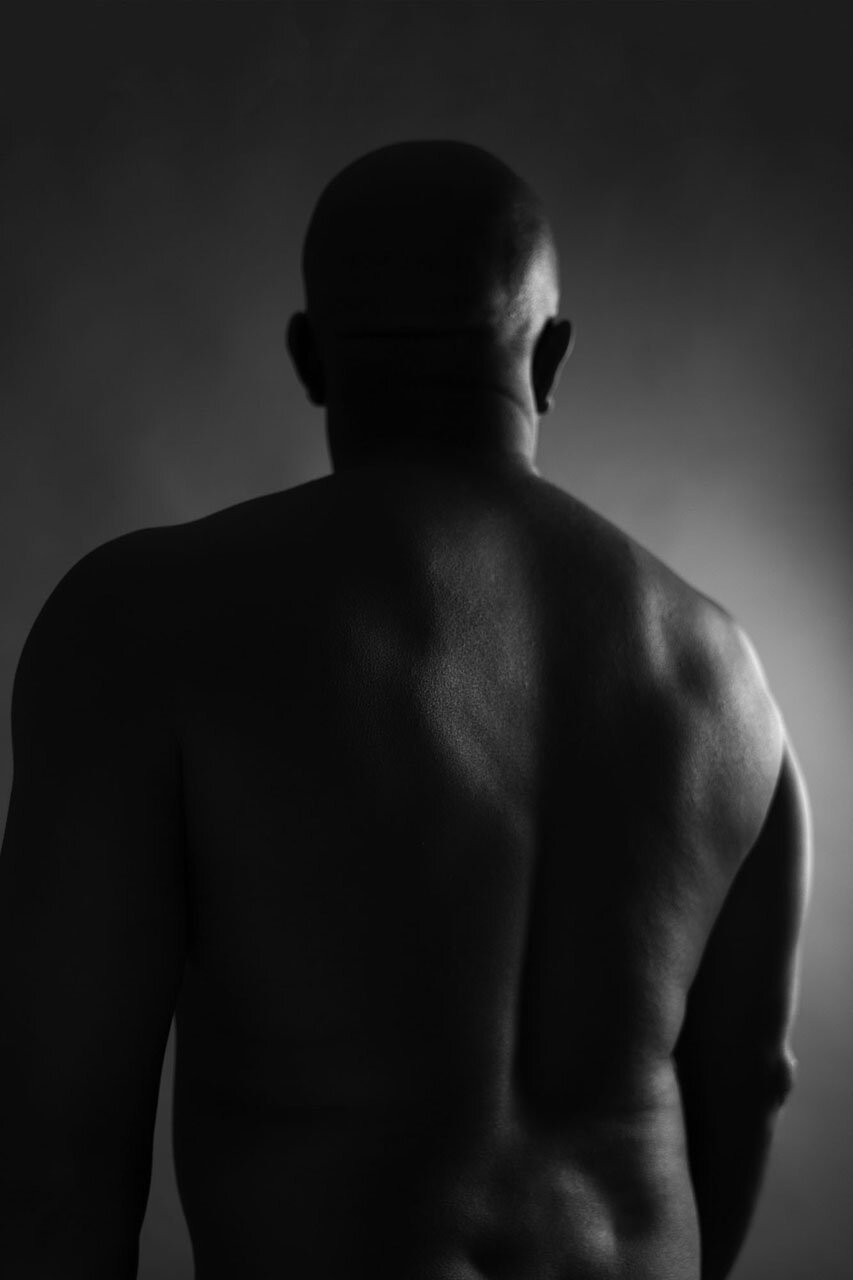Michael Darough : The Talk
Content warning: Police violence and state-sanctioned murder
In Michael Darough’s ongoing series “The Talk,” faceless men, viewed from behind, represent the stories of Black people murdered by police in the United States. Darough models for the photographs himself, inserting himself into each fatal scenario, shaping his own body into a memorial for each lost life. Distilling each story down to one pose and one prop, Darough highlights common denominators linking stories that might otherwise seem disparate, but which are structurally linked by systems of white supremacy, racial profiling, police violence, and cycles of criminalization and mass incarceration. Darough’s series bears witness to the numbing regularity with which high-profile stories emerge in the news of Black people victimized by US policing practices, while also — through a series of “Unknown Portraits” — honoring the countless other stories that struggle to be told or do not receive news coverage.
Michael Darough : The Talk
In Michael Darough’s ongoing series “The Talk,” faceless men, viewed from behind, represent the stories of Black people murdered by police in the United States. Darough models for these “portraits” himself, with his camera set on a timer. By distilling each story down to one pose and one prop, Darough highlights common denominators linking stories that might otherwise seem disparate, but which are structurally linked by systems of white supremacy, racial profiling, police violence, and cycles of criminalization and mass incarceration. Darough conceived of “I Was In My Apartment” in relation to the story Botham Jean, who was killed in his own apartment by off-duty Dallas police officer Amber Guyger in 2019. In 2021, the image comes to evoke the more recent killing of Breonna Taylor when plainclothes officers from the Lousiville Metro Police Department forced entry into her apartment as part of a drug investigation in March 2020.
Darough’s series bears witness to the numbing regularity with which high-profile stories emerge in the news of Black people victimized by US policing practices. Breaking up the rhythm of these repeated shots are “blanks” that Darough shoots against an empty backdrop. Each blank is unique: the idea came from test shots Darough would take to set the lighting for the portrait set-ups he was about to step into. Now, after photographing himself, Darough steps to the other side of the camera to shoot the empty set-up, sometimes preserving its lighting, other times playing with lighting through a process of trial and adjustment until he reaches a certain mood or effect that flows well with the other images in the series. For Darough, these “Unknown Portraits,” void of the figure, symbolize countless other stories that struggle to be told, stories that do not receive news coverage.
Social media and the digital age have increased the visibility of police violence. But Darough’s work reminds us that the murders we see and hear about are only the tip of the iceberg, historically and within our current moment. As these killings repeat, so must “the talk”—the conversation that generations of Black families in the United States have had to have with their children, especially sons, to coach them in behaviors they hope will help them make it home alive from day-to-day encounters with policing. The Talk pays homage to these conversations. It also points to the heartbreaking futility of teaching survival strategies to one’s children within a system so intent on criminalizing them, even when “wearing the right clothes.”
Although The Talk is an archive of victims, Darough’s series refuses to present its subjects as such. His photographs restore these individuals’ bodies to the verticality so frequently denied them by illegal choke-holds and unforgettable images of their deaths made highly visible through cell phone photography. Darough has his figures standing tall in each photograph, shaping his own body into memorials to their lives.






















